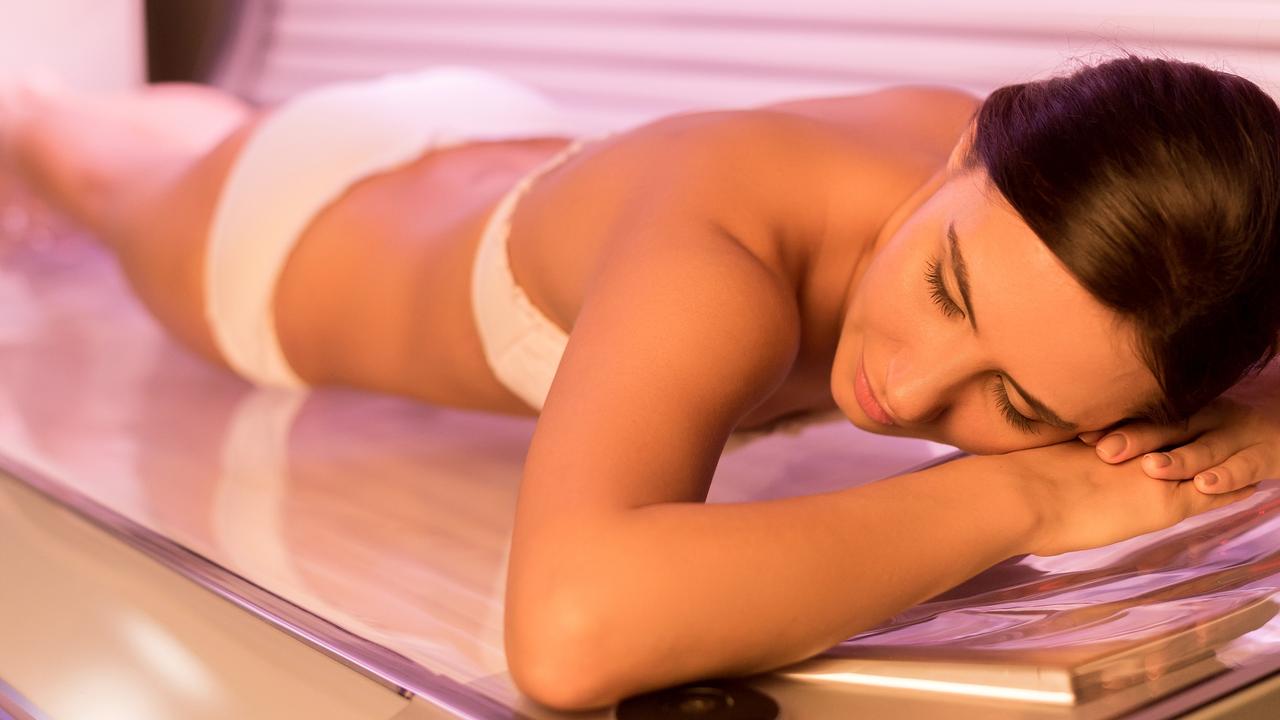Fan of a tan? Why you should think twice about collariums
Think collariums are a safe alternative to solariums? We ask the experts to shed light on the dangers of tanning beds and who is most at risk.

Think collariums are a safe way to tan? Think again.
Tanning beds (also known as solariums) have been banned in Australia since 2015, but collariums – machines that claim to stimulate collagen, prevent hair loss and provide a longer-lasting tan – have been operating commercially in New South Wales, Queensland and Victoria.
But skin cancer experts are warning that the new beds are dangerous, and they’re ramping up the safety message for a new generation of tan fans.
WHAT IS THE DIFFERENCE BETWEEN SOLARIUMS AND COLLARIUMS?
Instead of the blue lights of a solarium, a collarium – also called a collagen bed – uses pink and red light to tan and stimulate collagen.
Professor Marion Eckert, of the University of South Australia, says while collariums are often marketed as safer than traditional tanning beds, they pose significant risks of skin cancer and premature ageing.
Prof Eckert says the new type of tanning bed primarily emits UVA radiation, which companies claim stimulates collagen production and tans the skin without the burning effect of UVB.
“However, it’s important to note that UVA radiation, while less likely to cause immediate sunburn, can still penetrate deep into the skin and contribute to long-term skin damage and increased cancer risk,” she says.
Claims around collagen production may be exaggerated, or even misleading, Prof Eckert notes, as excessive UV exposure can actually break down collagen and cause our skin to age faster.
“Someone dies every six hours from skin cancer in Australia, the last thing we need is misleading advertising and … these tanning beds used and promoted in Australia,” she says.
DANGERS OF TANNING BEDS, INCLUDING COLLARIUMS
Dr Joseph Scott, of The University of the Sunshine Coast, says whether it’s a solarium or a collarium, the research is clear.
Study results show a significantly higher risk of melanoma, basal cell carcinoma and squamous cell carcinoma with sunbed use.
“It tells us that both collariums and solariums emit UV radiation directly to the skin, which increases your risk of developing melanoma and other skin cancers,” Dr Scott, who is a senior lecturer in Health and Physical Education, says.
“Sunbeds were banned for a reason – because they are not safe.”
WHY ARE PEOPLE IGNORING THE RISKS OF TANNING BEDS?
Research suggests people use tanning beds for reasons including appearance, more confidence and treating skin concerns.
Cancer Council national skin cancer committee chair Professor Anne Cust says some young people may be unaware of the risks of tanning beds because they were banned nine years ago.
“For young adults and people in their late teens, they may not know what a solarium is,” Prof Cust says.
She says when sunbeds were legal and subject to testing by the authorities, there was a lot of variability in the levels of UV radiation being emitted.
“Some of those sunbeds had levels of UV that were much higher than what you’d get from the midday sun,” Prof Cust says.
In a nutshell, no tan other than a fake tan is safe.
“(A tan) is actually an indication that you’re doing damage to your skin,” Prof Cust says.
“It’s your body’s way of trying to protect itself. “
WHO IS MOST AT RISK THROUGH USING COLLARIUMS?
Dr Scott says young people need to be particularly vigilant with the protection of their skin.
“Research indicates that use of sunbeds during adolescence and early adulthood significantly increases skin cancer risks.
“If you use a sunbed before the age of 35, your risk of developing skin cancer in later life is increased by approximately 59 per cent.”



